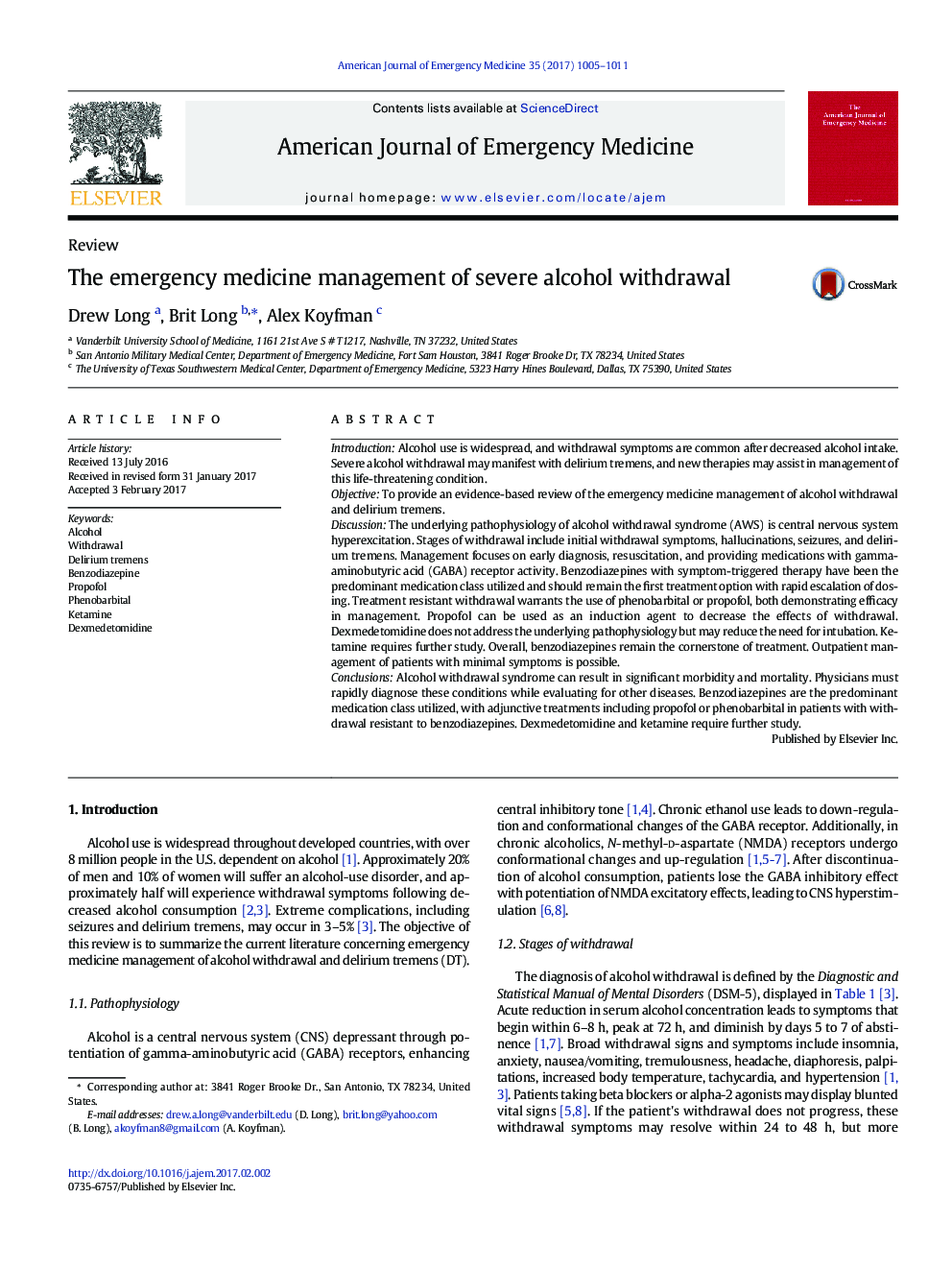| Article ID | Journal | Published Year | Pages | File Type |
|---|---|---|---|---|
| 5650502 | The American Journal of Emergency Medicine | 2017 | 7 Pages |
IntroductionAlcohol use is widespread, and withdrawal symptoms are common after decreased alcohol intake. Severe alcohol withdrawal may manifest with delirium tremens, and new therapies may assist in management of this life-threatening condition.ObjectiveTo provide an evidence-based review of the emergency medicine management of alcohol withdrawal and delirium tremens.DiscussionThe underlying pathophysiology of alcohol withdrawal syndrome (AWS) is central nervous system hyperexcitation. Stages of withdrawal include initial withdrawal symptoms, hallucinations, seizures, and delirium tremens. Management focuses on early diagnosis, resuscitation, and providing medications with gamma-aminobutyric acid (GABA) receptor activity. Benzodiazepines with symptom-triggered therapy have been the predominant medication class utilized and should remain the first treatment option with rapid escalation of dosing. Treatment resistant withdrawal warrants the use of phenobarbital or propofol, both demonstrating efficacy in management. Propofol can be used as an induction agent to decrease the effects of withdrawal. Dexmedetomidine does not address the underlying pathophysiology but may reduce the need for intubation. Ketamine requires further study. Overall, benzodiazepines remain the cornerstone of treatment. Outpatient management of patients with minimal symptoms is possible.ConclusionsAlcohol withdrawal syndrome can result in significant morbidity and mortality. Physicians must rapidly diagnose these conditions while evaluating for other diseases. Benzodiazepines are the predominant medication class utilized, with adjunctive treatments including propofol or phenobarbital in patients with withdrawal resistant to benzodiazepines. Dexmedetomidine and ketamine require further study.
